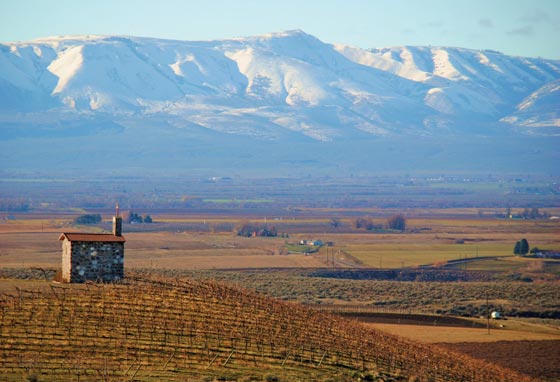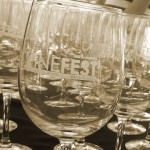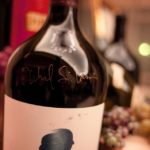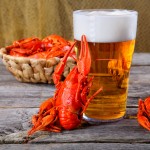Touring the Red Mountain AVA in Yakima Valley

The Yakima Valley, located in the south, central Washington is best known for it’s climate ideal for apple production. That fruit may not remain its chief distinction forever, though.
The Red Mountain AVA (officially designated as an American Viticulture Area in 2001) has quickly become world renowned for its creation of uniquely robust red wines. The area was first scouted for grape production in the early 1970’s by a pair of winemaking pioneers John Williams (Kiona Vineyards) and Jim Holmes (Kiona and Ciel du Cheval) and has been worked continuously since 1972.
Hemmed in on the western edge by the Yakima River, in the rain shadow of Mount Rainier, the area’s desert climate proves to be ideal for grapes. The AVA is comprised of roughly 4,000 total acres with some 1,400 under cultivation. Named for the cheatgrass covering the surrounding landscape, which turns a distinct wine red in the late spring, Red Mountain is one of the more geographically unusual terroirs in the state.
The Valley features a series of southwest facing hillsides, their slopes receiving warmer daytime temperatures and significantly higher sun exposure. The crisp, cool night air that blows in is critical for grape acidity. Red Mountain AVA soil sources from a unique confluence of factors as well. At the end of the Ice Age, the area was flooded by eddies from the nearby Missoula River, which then filled in over millennia by the wind swept sediment and loess, resulting in today’s fertile soil.
Thousands of years in geological shifts and floods coalesce in astounding wine. The proof lies in distinguished bottles of Merlot, Sangiovese, Syrah and Cabernet Sauvignon. While the AVA features dozens vintners, in all size ranges, many more than worthy of mention (including Kiona, which is still in production) a few luminary names are beginning to stand out on an international level.
Highly decorated, DeLille Cellars was recently honored as 2015 “vintner of the year” by The Auction of Washington Wines. This is heady praise, considering the relative infancy of the region. Over the decades, DeLille’s Cabernet selection has been hailed as among the best in the nation. Their 2012 “Four Flags” is a solid wine, featuring baroque undertones of peppercorns and hearty oak, featuring an earthy, almost vegetal finish. Think fennel and anise. Priced at roughly $65 a bottle, Four Flags represents a strong value in a pure Cabernet whose esteem only seems to increase with its age.
The same can be said for their higher end, Grand Ciel collection. In this more exquisite line, the Cabernets are even more daring and potent. Take, for example, the prestige worthy 2011 Grand Ciel Cab (scoring an average of 93) inspiring anticipation from the moment cork extracts, letting loose its elegant aroma. Treated with French oak, this wine is rugged, showing leather, but delightfully sophisticated as well, dangling hints of raspberry and blackberry fruit throughout the pallet.
For those more inclined toward sampling whites, Red Mountain offers an emerging assortment of varietals. The DeLille Cellar’s 2014 Doyenne Rousanne is a sprightly wine, effervescing bright, mineral elements, mingled with white flowers. It’s all the best aspects of springtime in a glass, and at an affordable $35-40 a bottle, the blend is one of the most attainable in the DeLille collection.
















